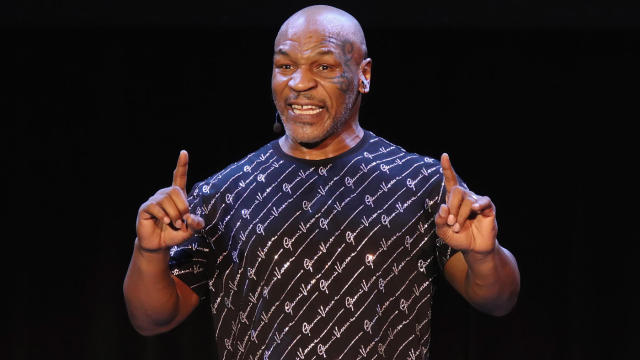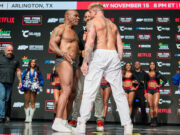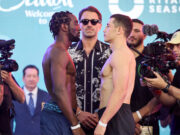
By Bart Barry-
Tomorrow, “Range: Why Generalists Triumph in a Specialized World” (Riverhead Books) by David Epstein, author of “The Sports Gene”, will become available to the public. There is but one mention of a boxer in the book, Vasyl Lomachenko, and this happens on page 8. Because the subject is an interesting one, though, and because its publisher was kind enough to send me a review copy despite my disclosing both this site’s specialized subject matter and my own tiny readership, what follows is a criticism made in good faith.
The longer this book went on, and the deeper I found myself in it, the less I enjoyed it. Not because of some unsettling truth, some grave misreading of myself or my life’s choices held up to a mirror’s objective gaze; it was because the book became increasingly repetitive and predictable.
All the usual suspects gather: Tolstoy, Einstein, van Gogh, Darwin, Edison, Kasparov, Michelangelo, jazz, NASA, U.S. Armed Forces, biomimicry-driven animal metaphors (foxes, frogs, birds, hedgehogs, darkhorses), and lots and lots of PhDs. Little of the material written about any of these subjects is new or originally interpreted, which makes their appearances unfortunate – since much of the rest of the book, parts that don’t detail academic acclaim or retroactively certified greatness, are quite enjoyable.
“Range’s” most enjoyable character is Frances Hesselbein, centenarian and accidental CEO, who doesn’t prove the book’s central theme, which is to be contrary, so much as give the book something delightful. Her primary gift, one assumes, lies in her adaptability, which may make her a generalist or an oscillating specialist or a fox or a hedgehog, depending where one finds her in her history and chooses to place her in his thesis. She is not a tidy package because she is a mammal, and few such creatures are tidy packages.
But a celebration of mammalian adaptability is well-trod already (M. Mitchell Waldrop knocked the subject out of the park 27 years ago with “Complexity”), and so a celebration of anti-specialists, people who aren’t raised to be automaton prodigies like Tiger Woods, composes a highly anticipated subject in 2019. Woods features prominently in the book’s opening, in a well-crafted, turn-the-clichés-around sort of commentary that actually, and quite surprisingly, suffers in no way from his unexpected Masters victory a few months ago – a happening that looked nigh impossible during the time Epstein wrote “Range”.
Woods, of course, is the prototypical, 10,000-hours-to-mastery mold into which a million vicariously thrilled American fathers have poured their offsprings’ childhoods since 1997 or so.
But watch how that might itself be turned round:
Eldrick had an overbearing father. The boy was forced to play golf all the time because he had a gift, one his father told business partners would change the world. Eldrick succeeded at a shockingly young age. His course was set. He would be the world’s greatest golfer and the world’s richest golfer, the specialist’s specialist. But after puberty Eldrick realized he had another calling. He spent nearly as many hours practicing seduction techniques as chipping techniques. He loved to uncover women like he uncovered his driver (a tiger head sewn by his mother). One day the generalist that he loved to be clashed with the specialist the world expected him to be. Sponsors fled, surgeries followed, he lost hundreds of millions of dollars in a divorce settlement. But he continued doggedly on his generalist quest to prove a balding nerd raised at a country club could be every bit as promiscuous as an NBA power forward or rock musician. Some successes and many humiliations later, one quiet spring afternoon in Georgia, Eldrick “Tiger” Woods became only the second professional golfer ever to win 15 career majors.
*
The money Americans pay self-help authors creates a gravity nonfiction authors of all stripes now find irresistible. Subsequently, there’s something a touch too glib in most American writing. Every character finds his life compressed into Forrest Gump’s. Epstein appears aware of this and often resists it. But gravity remains:
“As a final flourish, with just a few hours of work, a colleague helped (Gunpei Yokoi) program a clock into the display. LCD screens were already in wristwatches, and they figured it would give adults an excuse to buy their ‘Game & Watch’,” Epstein writes about a generalist Nintendo employee. Just four sentences later, Epstein completes the epic thusly: “‘Game & Watch’ remained in production eleven years and sold 43.4 million units.”
In a 100,000-word book, this is about the same as the Gumpian invention of the smiley-face t-shirt.
Ah, but this book is supposed to be t-shaped, rogue, to make manifest its point about sampling numerous disciplines, represented here as anecdotes, en route to serendipitous, interdisciplinary breakthroughs!
Well, OK. But let’s go all the way with our reconsideration of everything and ask this entirely relevant question: Why bind all of this in a book when there are more appropriate media available?
It’s because, in an inversion of its inversion, this book wants the academy’s approval very much. This thought happened somewhere in the middle of an Epstein anecdote: “‘Outsider artists’ are the self-taught jazz masters of visual art, and the originality of their work can be stunning. In 2018, the National Gallery of Art featured a full exhibition dedicated to self-taught artists; art history programs at Stanford, Duke, Yale, and the Art Institute of Chicago now offer seminars in outsider art.”
The academy approves, see!
But how very mediocre of it, and how perfectly backwards.
The intended audience for this book, hyper-educated professionals who fancy themselves rebellious, should be surprised exceptional things happen for generations without once appearing in textbooks. Nobody else will be, though, and certainly nobody who reads often about our beloved sport.
Bart Barry can be reached via Twitter @bartbarry























